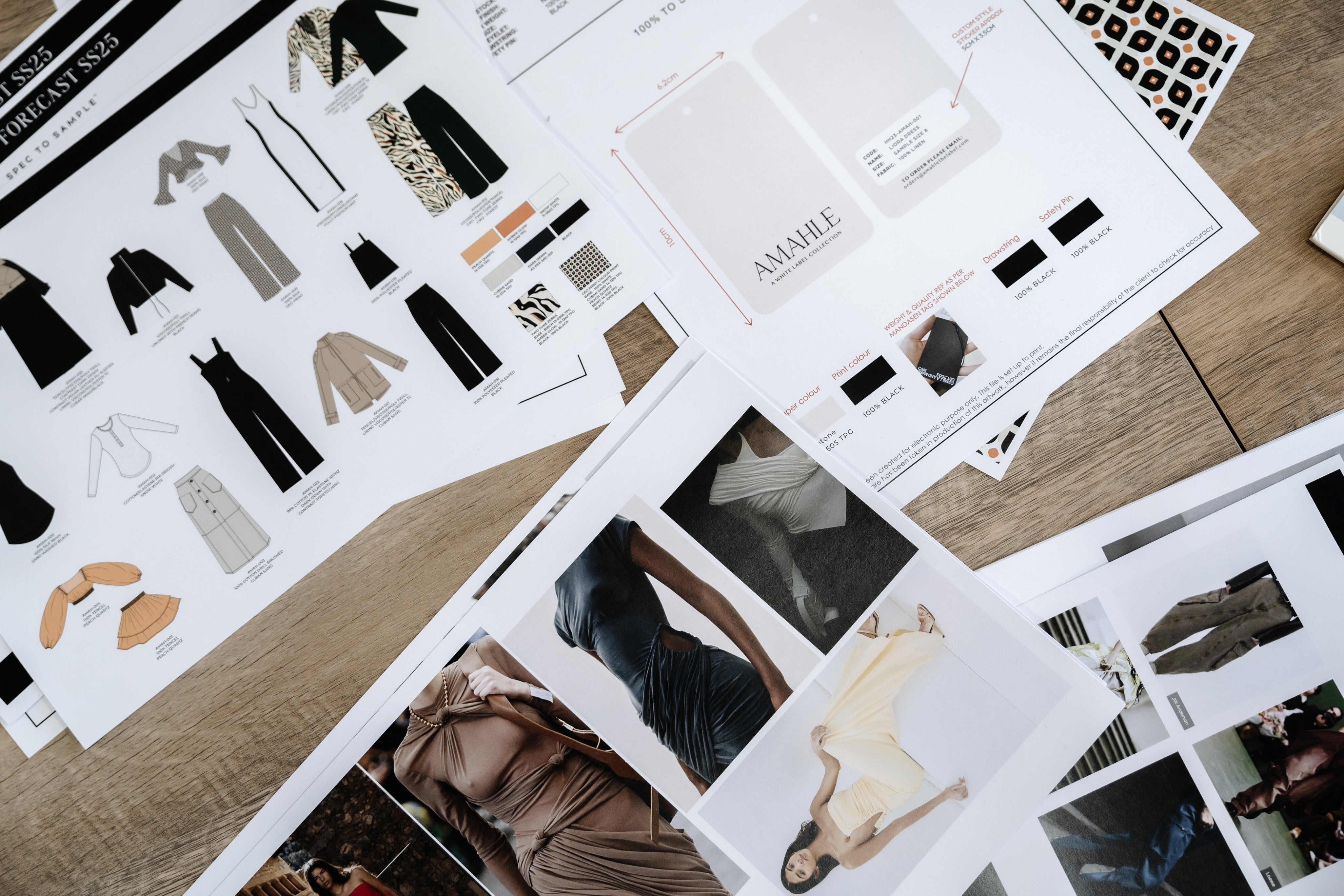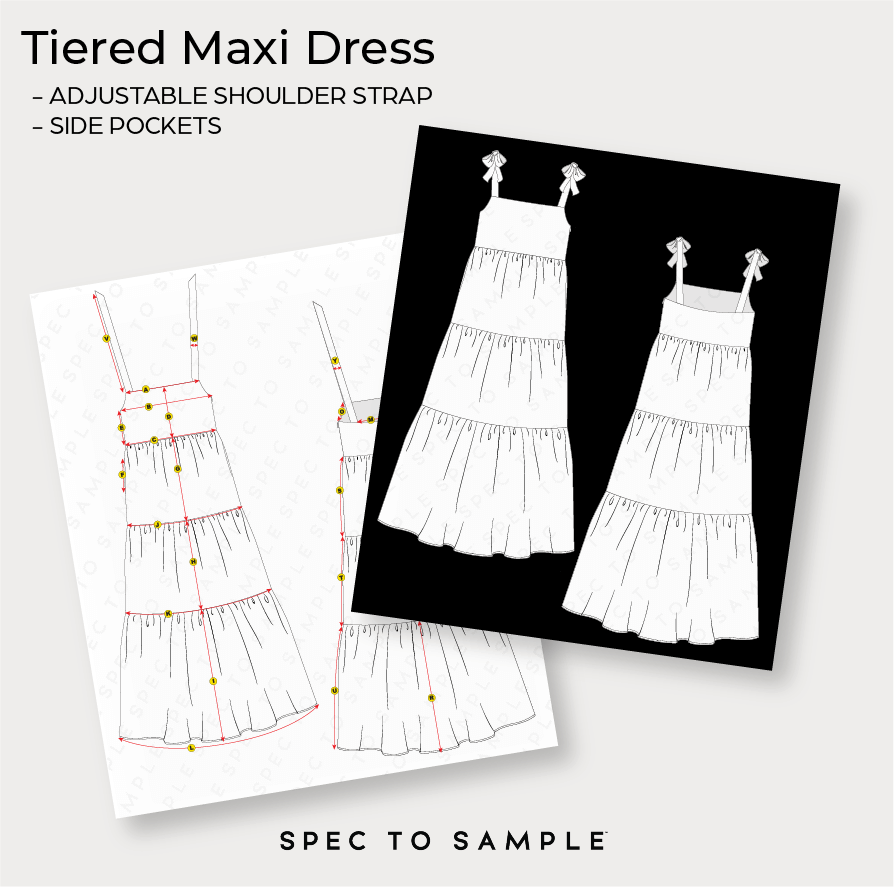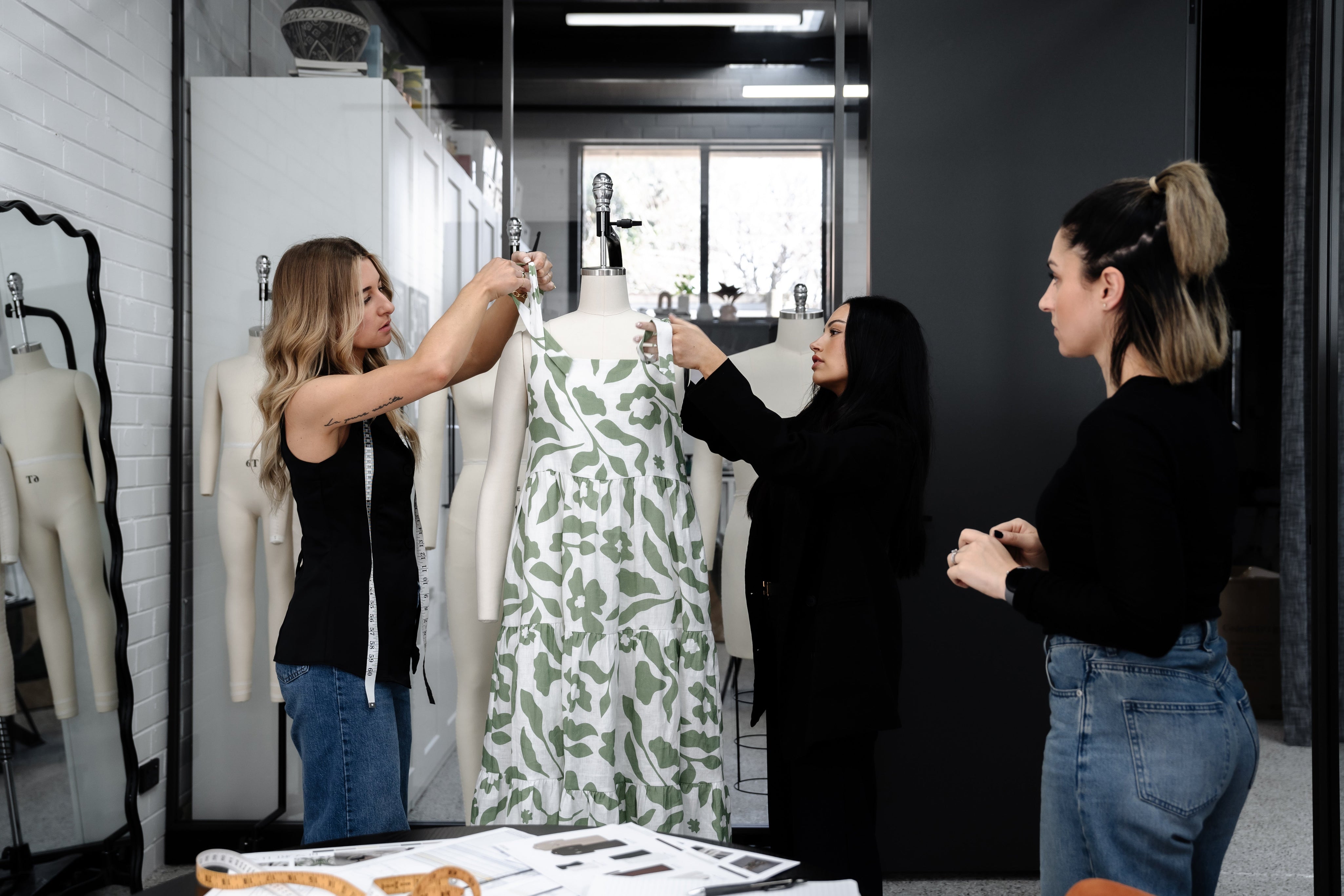How to Protect Your Fashion Brand's Intellectual Property

In the fashion industry, intellectual property (IP) protection stands as a cornerstone for brand sustainability and innovation. At its core, intellectual property encompasses a diverse range of intangible assets that are central to a fashion brand's identity. This includes trademarks, copyrights, patents, design rights, and trade dress. This introduction aims to enlighten you the importance of safeguarding these assets, walking you through licensing, and enforcing your rights as the owner.

Significance of Intellectual Property in Fashion
We know you’ll agree that the fashion world is highly competitive. Therefore, establishing a unique and recognisable brand identity is a necessity. Intellectual property rights serve as the bedrock upon which your fashion brand should build its distinction. Whether it's a signature logo, an iconic design element, or a novel manufacturing process, IP protection ensures that the creative undertakings of fashion designers and brands are duly recognized and respected.
Beyond the realm of creativity, intellectual property rights also play a big role in fostering innovation and investment within the fashion industry. By providing legal mechanisms to safeguard proprietary designs, technologies, and branding elements, IP protection incentivizes designers and fashion houses to push the boundaries of creativity and invest in research and development.
Overview of Intellectual Property Types
To dive deeper into the intricate landscape of IP protection in fashion, you’ll have to understand the various types of intellectual property rights at play:
Trademarks
Trademarks serve as distinctive symbols that distinguish the goods and services of one brand from another. In the context of fashion, trademarks encompass brand names, logos, slogans, and other identifiers that consumers associate with a particular brand's quality and reputation.
Copyrights
Copyrights protect original works of authorship, including creative designs, patterns, textile prints, and artistic elements. In fashion, copyrights extend to garment designs, fabric patterns, sketches, and other creative expressions.
Patents
Patents grant inventors exclusive rights to their inventions, preventing others from making, using, or selling the patented invention without permission. While patents are less common in the fashion industry compared to other sectors, they may apply to innovative processes, technologies, or materials used in garment production.
Patents in the fashion industry may cover a wide range of innovations, including:
-
-
-
- Novel fabric compositions and treatments
- Innovative garment construction techniques
- Functional apparel accessories and fastening mechanisms
- Sustainable and eco-friendly materials and processes
-
-
Design Rights
Design rights specifically protect the aesthetic appearance of a product, including its shape, configuration, ornamentation, and surface decoration. In fashion, design rights are particularly relevant for safeguarding the visual aspects of clothing, footwear, and accessories.
Trade Dress
Trade dress refers to the overall appearance and packaging of a product, including its colour schemes, packaging designs, and product configurations. In fashion, trade dress protection may extend to distinctive store layouts, product packaging, and visual merchandising elements.
Numerous fashion brands have successfully leveraged trade dress protection to safeguard their distinctive visual identities and prevent competitors from imitating their designs. Examples of successful trade dress protection in the fashion industry include:
The iconic red sole of Christian Louboutin's high-heeled shoes, which has been recognized and protected as a distinctive trade dress element.
The distinctive packaging and design of Tiffany & Co.'s jewelry boxes, which have become synonymous with the brand's luxury and elegance.
The unique storefront designs and architectural elements of flagship stores for luxury fashion houses such as Louis Vuitton and Chanel, which serve as symbols of the brand's prestige and exclusivity.
By studying these examples and implementing strategic measures to protect their own trade dress, fashion brands can establish a strong and recognisable visual identity in the marketplace and maintain a competitive edge against imitators and copycats.
Steps to Register IP for Your Fashion Brand
For convenience and better results (less headaches too!), we would advise availing the services of an expert. Local and international laws can be quite complicated and it leaves less room to make mistakes if you hire an expert. Otherwise, you can follow these:
Step 1: Conduct a Thorough Search
Before filing any of the five, you need to conduct a comprehensive search to ensure that the desired IP is available for use and registration.
Trademarks: trademark databases to identify any conflicting marks that may pose a risk of infringement or dilution.
Copyrights: garment designs, textile prints, sketches, and other creative expressions fixed in a tangible medium of expression.
Patents: novel fabric compositions, innovative construction techniques, or unique functional features.
Design Rights: garment designs, textile patterns, embellishments, and other visual elements that contribute to the overall aesthetic appeal of your products.
Trade Dress: unique product designs, packaging designs, colour schemes, and other visual elements that contribute to your brand's overall aesthetic.
Step 2: Compile Documentation
Gather the necessary documentation to support your application, including copies of the original works, evidence of ownership or authorship, and any relevant licensing agreements or assignments. Conduct a thorough search to identify existing IP and publications related to your product. Conduct a comprehensive search to ensure that your designs are original and do not infringe upon existing rights held by others. Keep detailed records and documentation of your brand's IP, including photographs, design sketches, packaging samples, and marketing materials. This evidence can be invaluable in establishing the distinctiveness and protectability of your IP in legal proceedings.
Step 3: File an IP Application
Once you've determined that your desired IP is available, the next step is to file an application with the appropriate office. The application typically requires basic information about the work, the author or creator, and the nature of the claim. After filing your IP application, it will undergo scrutiny by an examiner to assess its novelty, non-obviousness, and utility. If the examiner raises any objections or rejections, you'll need to respond promptly and address any concerns raised by the examiner.
Once your IP are registered, you will need to maintain and renew your registrations as required by law. This may involve paying periodic renewal fees and complying with any maintenance requirements specified by the intellectual property office.

Contracts and Agreements
Contracts serve as legally binding agreements that outline the rights, obligations, and responsibilities of the parties involved. This helps to mitigate risks, resolve disputes, and facilitate smooth business operations.
Key Clauses in Intellectual Property Agreements
When drafting contracts and agreements in the fashion industry, certain key clauses should be included to address intellectual property rights and obligations effectively. These clauses may include:
Intellectual Property Ownership
Clearly specify the ownership of intellectual property rights, including trademarks, copyrights, patents, design rights, and trade secrets, created or used in connection with the agreement. Clarify whether ownership rights are retained by the creator or transferred to the other party through licensing or assignment.
License Grant
Define the scope and limitations of any intellectual property licences granted under the agreement, including the territory, duration, exclusivity, and permitted uses. Specify any royalties, fees, or other considerations payable for the use of licensed intellectual property rights.
Confidentiality and Non-Disclosure
Include provisions to protect confidential information and trade secrets shared between the parties during the course of the agreement. Require the parties to maintain confidentiality and restrict the disclosure of sensitive information to third parties.
Indemnification
Allocate responsibility for intellectual property infringement claims and liabilities between the parties. Include indemnification provisions to hold harmless and defend against any claims arising from the unauthorised use or infringement of intellectual property rights.
Dispute Resolution
Establish mechanisms for resolving intellectual property disputes arising under the agreement, including mediation, arbitration, or litigation. Specify the governing law and jurisdiction for any legal proceedings related to intellectual property rights.
Best Practices for Drafting and Negotiating Contracts
When drafting and negotiating intellectual property agreements in the fashion industry, consider the following best practices:
-
Seek Legal Advice: Consult with experienced intellectual property attorneys to ensure that contracts are drafted in compliance with applicable laws and regulations and adequately protect your interests.
-
Be Clear and Specific: Clearly define the rights, obligations, and responsibilities of the parties in the agreement, using precise language and avoiding ambiguity or uncertainty.
-
Negotiate Fair Terms: Strike a balance between protecting your intellectual property rights and fostering mutually beneficial relationships with business partners. Negotiate fair and reasonable terms that reflect the value of the intellectual property being licensed or transferred.
- Conduct Due Diligence: Before entering into any intellectual property agreements, conduct due diligence on the other party to assess their reputation, financial stability, and ability to fulfil their obligations under the agreement.
Options for Enforcing Intellectual Property Rights
In the event of intellectual property infringement or unauthorised use of intellectual property rights, fashion brands have several options for enforcing their rights and seeking redress:
Cease-and-Desist Letters
Send cease-and-desist letters to infringers demanding that they cease all unauthorised use or reproduction of your intellectual property rights. Cease-and-desist letters serve as a formal notice of infringement and may prompt the infringing party to cease their unlawful activities voluntarily.
Alternative Dispute Resolution
Explore alternative dispute resolution mechanisms, such as mediation or arbitration, to resolve intellectual property disputes outside of formal litigation. Mediation and arbitration offer a more cost-effective and expeditious means of resolving disputes while preserving business relationships.
Litigation
As a last resort, initiate legal proceedings through the courts to enforce your intellectual property rights and seek remedies for infringement. Litigation may involve filing a lawsuit for trademark infringement, copyright infringement, patent infringement, or other forms of intellectual property violation.

Intellectual property protection should be a priority if you are seeking to safeguard your creative innovations, brand identity, and commercial interests in an increasingly competitive and globalised marketplace. By leveraging trademarks, copyrights, patents, design rights, trade dress, and contractual agreements, even small fashion brands can assert their rights, protect their investments, and maintain a competitive edge in the industry.
As fashion continues to evolve and innovate, the importance of intellectual property protection will only grow more significant. By prioritising intellectual property rights fashion brands can secure their position as leaders in creativity, innovation, and brand excellence. Set your intellectual property base right in order to reap the future benefits and also avoid the pitfalls.









